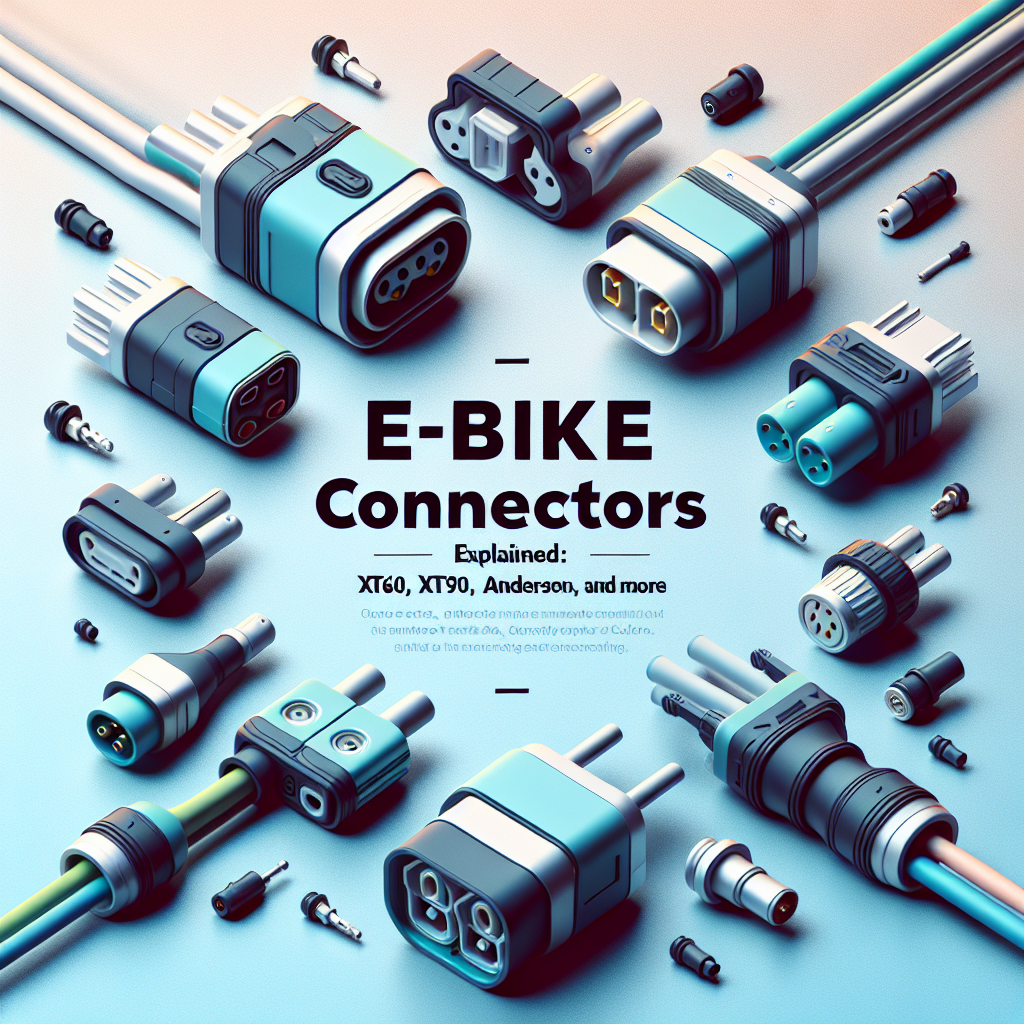If you’re getting into e-bikes — whether you’re building one, upgrading parts, or just curious — you’ll come across different types of connectors. These connectors are what link your battery, motor, controller, and other components together. Getting the right ones can make your e-bike safer, cleaner, and easier to maintain.
In this post, I’ll walk you through the most common e-bike connectors like XT60, XT90, Anderson, and more — all in simple language.
🔌 1. XT60 Connectors
- Used For: Connecting the battery to the controller
- Shape: Small yellow plastic with two flat pins
- Current Rating: Up to 60 amps
- Why It’s Good: Compact, reliable, and handles high current well
- Watch Out: Can be tight to unplug, especially when new
XT60 is one of the most popular connectors in the e-bike world. It’s used a lot because it’s small but powerful, and gives a strong connection between the battery and the rest of your system.
🔌 2. XT90 Connectors
- Used For: Bigger batteries or more powerful motors
- Shape: Similar to XT60 but larger
- Current Rating: Up to 90 amps
- Extra Feature: XT90-S has anti-spark technology
- Why It’s Good: Great for high-power builds
- Watch Out: It’s a bit bulkier than XT60
If you’re running a high-powered e-bike, XT90 is a better choice. The anti-spark version helps protect your electronics when you plug it in.
🔌 3. Anderson Powerpole Connectors
- Used For: Battery, motor, or controller connections
- Shape: Rectangular plastic, usually red or black
- Current Rating: 30A, 45A, 75A (depends on type)
- Why It’s Good: Easy to unplug and customize
- Watch Out: Make sure they’re fully clipped in — they can come loose
Anderson connectors are handy and often used in DIY builds. You can even stack them together for custom setups.
🔌 4. Bullet Connectors
- Used For: Motor phase wires (green, yellow, blue wires), sometimes batteries
- Shape: Round, plug-and-socket style
- Why It’s Good: Simple and cheap
- Watch Out: Not waterproof and not as secure
You’ll usually see bullet connectors on motor wires. They get the job done but aren’t the most durable for long-term use.
🔌 5. JST Connectors
- Used For: Low voltage signal wires (PAS sensor, throttle, brake sensors, etc.)
- Shape: Tiny plastic plugs, usually white or red
- Why It’s Good: Great for small signals
- Watch Out: Very small and delicate — easy to damage
These are common in e-bike controllers and displays. They don’t handle power, just signals.
🔌 6. Higo / Julet Connectors
- Used For: Throttle, brake sensors, displays, lights
- Shape: Round, rubber-sealed, waterproof connectors
- Why It’s Good: Waterproof and color-coded for easy plug-and-play
- Watch Out: Hard to find replacements, often brand-specific
These are super common on factory-built e-bikes. They’re tidy and weather-resistant, perfect for all-weather riders.
🔌 7. XLR Connectors
- Used For: Charging the battery
- Shape: Metal round connector with 3 pins
- Why It’s Good: Reliable and durable
- Watch Out: Wiring must be done correctly — wrong setup can be dangerous
XLR connectors are often seen on e-bike chargers. They’re strong and secure, which is important when dealing with charging currents.
💡 Final Tips
- Don’t mix different connectors — only use matching pairs to avoid short circuits.
- Check voltage and amp ratings before replacing or upgrading.
- Use waterproof connectors if you ride in rain or muddy conditions.
- Ask before cutting or soldering wires — especially if you’re not sure what each one does.
Understanding connectors helps you work on your e-bike more confidently. Whether you’re fixing a connection issue or upgrading your setup, knowing your XT60 from your Higo can save you a lot of time and trouble.
Got questions about connectors? Drop a comment or reach out — I’m here to help!
